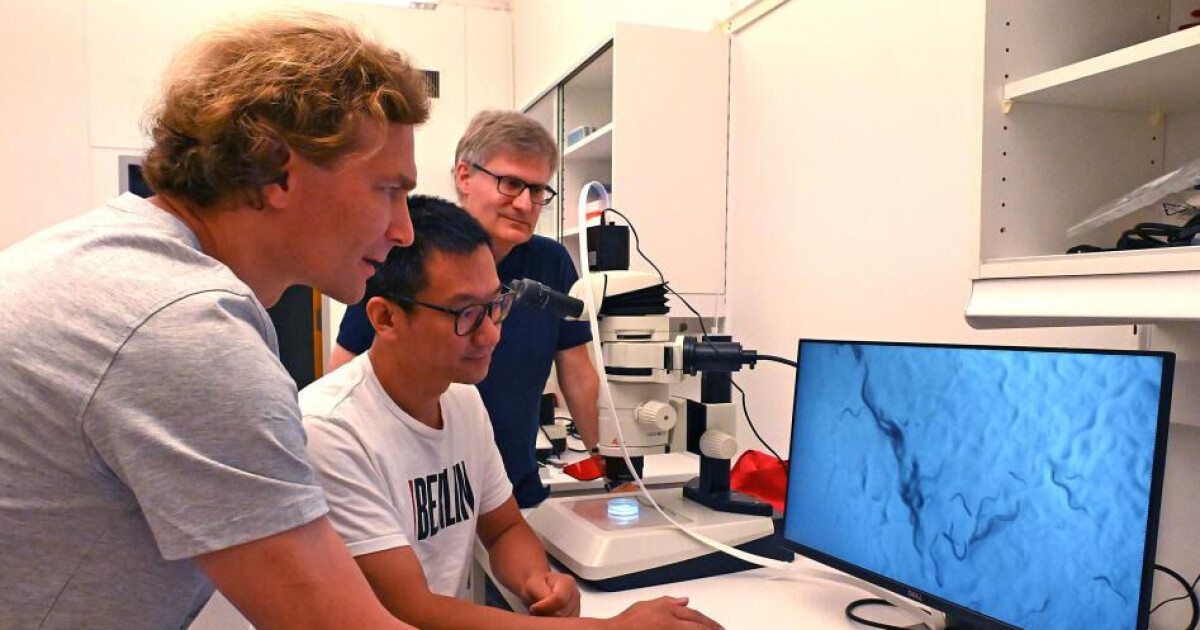Can we travel through space using this little worm?

“You’re not dead until you’re hot and dead,” is a common saying in emergency medicine.
In 1999, 29-year-old Anna Bågenholm survived a body temperature of 13.7°C, after a skiing accident sent her under the ice in a river. Her heart didn’t beat for several hours.
Now a group of researchers in Oslo have come one step closer to explaining what happens in cells that undergo deep cooling.
Bågenholm’s story was later told by the BBC. (Video: BBC/YouTube)
A Tiny Ringworm May Provide Answers
Their work is relevant to both hibernation and accidental hypothermia. It has ramifications for the treatment of trauma patients in hospitals, neurodegenerative diseases like Alzheimer’s disease and Parkinson’s disease.
In the future, it may even help humans travel through space.
“This project started a few years ago as an ambitious master’s project, where the student wanted to work on something cool. Obediently, we started studying the proteins involved in cold responses,” explains Rafal Ciosk, Professor in the Section of Biochemistry and Molecular Biology of the Department of Biosciences at the University of Oslo.
The researchers studied this in their favorite model organism, the nematode C. elegans (Caenorhabditis elegans). The tiny worm is about 1 millimeter long and is widely used in biological research.
Hibernating worms extend their lifespan
Through their research, Ciosk and his colleagues realized how little was known about organisms’ reactions to cold.
They saw that if they chill C. elegans in a particular way, they will survive for a very long time without affecting the total lifespan.
The researchers kept the worms at 4 degrees for a week, then took them out of the cold and measured their lifespan. Remarkably, the total lifespan was a week longer than that of animals cultured at normal temperature.
“It looked like they were hibernating, and that’s something that’s never been described for this organism before,” Ciosk says. “We started looking at what’s going on in this organism and, by doing genetics on this model, we realized that there are certain manipulations that we can do that make the survival of these animals in the cold even more difficult. efficient.”

An iron-storing protein is key
A particular genetic manipulation that increases levels of ferritin, a protein that stores iron, protected the worms from the cold.
Iron is an essential element for us, however free iron can be toxic. Ferritins form huge nano-cages that can house thousands of iron atoms, allowing iron to be stored and transported in a safe and non-toxic way.
Ciosk explains that they also tested whether this could be relevant for mammalian cells. They chose neurons, nerve cells from the brain and the nervous system, which are very sensitive cells.
“We found that when we induce ferritin in these cells and expose them to cold, the ferritin had protective effects,” he says.
The researchers also found that mimicking the effect of ferritin with drugs also had beneficial effects for neurons.

Hibernating our way through space?
You might think that the tiny worm C. elegans has very little in common with humans.
“The physiology is very different, but at the basic cellular level many processes are retained. The functioning of the cell is very similar from one species to another,” explains Ciosk.
Hibernation is rare among primates, but there are examples of hibernating lemurs in Madagascar.
“In C. elegans and neuronal cells, we overexpressed ferritin and then showed it to have benefits. But, apparently, ferritin is expressed naturally in these hibernating primates. Maybe that’s how they survive the cold in the wild,” says Ciosk.
Humans do not hibernate, but hibernation-like sleep is suggested to facilitate long-distance space travel in the future.
Cool trauma patients to 10 degrees
A much closer application in time is the cooling of patients in hospitals.
Ciosk explains that cooling is used in several ways in the clinic. With moderate cooling, the patient’s body temperature is lowered to 32-33 degrees.
In deep cooling, however, the body temperature will be lowered to about 10 degrees. Clinical trials explore deep cooling in a hospital in the United States.
“It’s in the range of hibernating animals,” Ciosk says.
Relevant for diseases like Alzheimer’s and Parkinson’s
The research carried out by the group in Oslo is also relevant for neurodegenerative diseases such as Alzheimer’s and Parkinson’s.
“In the neurons we are experimenting with, we are looking at cold-related degeneration. A few years ago, a study showed that certain cold-induced proteins had protective effects against various neurodegenerative diseases,” explains Ciosk. “So if you find how hibernators protect their neurons in the cold, you may also find patient-relevant pathways.”
The next step for the Oslo researchers is to take what they found in C. elegans and cultured neurons and move it to an in vivo mammalian model.
Reference:
Pekec et al. Ferritin-mediated iron detoxification promotes survival from hypothermia in Caenorhabditis elegans and murine neurons, Nature Communication, flight. 13, 2022.